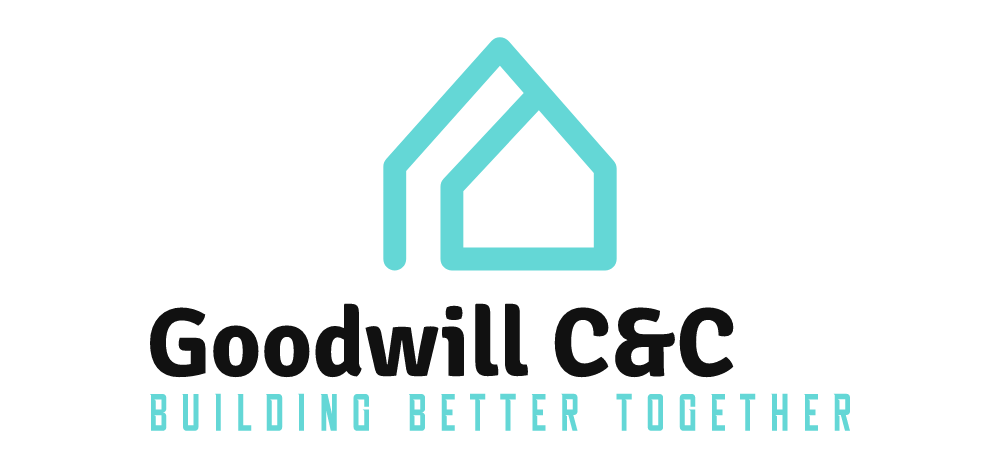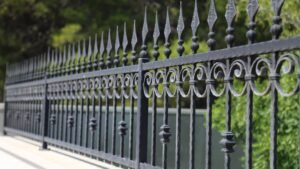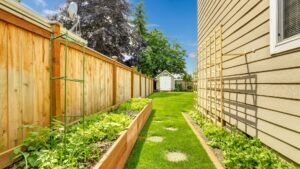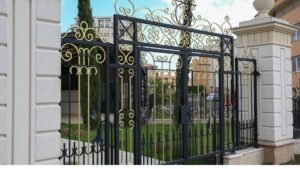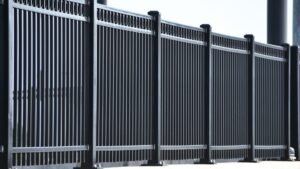Welcome to our comprehensive guide on understanding deck costs in New Zealand! Whether you’re dreaming of a serene outdoor retreat or planning a space for lively gatherings, knowing the cost of building a deck is crucial for making informed decisions. In this guide, we’ll explore the various factors that influence deck prices, including materials, size, design complexity, and location. We’ll also provide a detailed breakdown of decking materials, additional costs to consider, cost-saving tips, and real-life examples to help you budget effectively. Let’s dive in and help you turn your deck dreams into reality with confidence and clarity.
On average, the cost of building a deck in New Zealand ranges from NZD $200 to $1,000 per square meter, depending on materials, size, and design complexity. For a standard 20-square-meter wooden deck, expenses typically fall between NZD $4,000 and $20,000, including materials and labor. Composite decking may have a higher initial cost but offers long-term savings on maintenance. Additional features such as railings, stairs, and lighting can also influence the total cost.
Table of Contents
Factors Influencing Deck Costs
Materials
When planning to build a deck in New Zealand, one of the primary considerations is the choice of materials. The materials you select can significantly impact both the initial outlay and long-term maintenance costs. Popular decking materials in NZ include wood and composite options.
Wood
Natural timber is a favored choice due to its aesthetic appeal and durability. Common types of wood used in New Zealand decking include pine, kwila, and mahogany. Pine is generally the most affordable, ranging from $80 to $200 per square meter, but it requires regular maintenance to prevent rot and insect damage. Kwila, known for its rich color and resilience, costs between $120 to $280 per square meter. Mahogany, a high-end option, can exceed $300 per square meter due to its superior durability and minimal maintenance requirements.
Composite
Composite decking, made from a blend of wood fibers and plastic, is gaining popularity due to its low maintenance and longevity. Brands like Trex and Futurewood offer products that mimic the look of natural wood without the need for regular staining or sealing. Composite decking prices generally range from $140 to $350 per square meter. Although the initial investment is higher compared to most wood options, the lower maintenance costs can make it more economical over time.
Size and Design
The size and design of your deck are crucial factors that influence the overall cost.
Size
The larger the deck, the more materials and labor required, which directly increases the cost. For example, a small 10 square meter deck might cost around $2,000 to $4,000, while a larger 50 square meter deck could range from $10,000 to $20,000 or more.
Design Complexity
A simple, rectangular deck is generally the most cost-effective to build. However, if you opt for a more complex design featuring multiple levels, built-in seating, or intricate patterns, the costs will rise. Custom features like stairs, railings, and lighting also add to the overall expense. For instance, adding custom railings might increase costs by $50 to $150 per linear meter, while built-in seating can add several hundred dollars to the project.
Location
Geographical location within New Zealand can also affect decking costs.
Urban vs. Rural Areas
In urban areas like Auckland and Wellington, higher living costs and demand can drive up both material and labor prices. Conversely, in rural regions, the cost of living is typically lower, which can result in reduced labor costs. However, transporting materials to remote areas might incur additional expenses. For instance, building a deck in a remote location may require additional transportation fees for materials and labor, adding a few hundred dollars to the overall cost.
Labor Costs
Labor costs for deck building in New Zealand vary based on several factors, including the complexity of the project and the region.
Typical Labor Costs
On average, professional deck builders charge between $50 and $100 per hour. For a standard deck, labor might constitute 30-50% of the total project cost. For example, if your deck project totals $10,000, you can expect to spend between $3,000 and $5,000 on labor alone.
DIY vs. Hiring Professionals
Opting for a DIY approach can save you labor costs, but it requires a significant time investment and a certain level of skill. While DIY can be rewarding and cost-effective for those with the necessary skills, it also carries risks such as improper installation or safety issues. Hiring professionals ensures a high-quality finish and adherence to building codes, but it comes at a higher cost. Professionals bring expertise, efficiency, and peace of mind that the job will be done correctly.
In summary, the cost of building a deck in New Zealand is influenced by several factors including the choice of materials, size and design of the deck, geographical location, and labor costs. By understanding these factors, you can better plan and budget for your decking project, ensuring you achieve a balance between cost and quality that suits your needs.

Breakdown Of Decking Materials
When planning to build a deck, one of the most crucial decisions you’ll make is choosing the right material. The material you select will not only influence the aesthetics of your deck but also its durability, maintenance needs, and cost. In this section, we’ll delve into the most common decking materials available in New Zealand, including their pros, cons, and price ranges.
Wooden Decks
Wooden decks are a classic choice, offering natural beauty and warmth that is hard to replicate. The three most popular types of wood used in New Zealand are Pine, Kwila, and Macrocarpa.
1. Pine Decking
Pine is the most commonly used decking material in New Zealand due to its affordability and availability. Treated pine is resistant to decay and insect attacks, making it a durable option for outdoor use.
Price Range: Pine decking is generally priced between $90 and $150 per square meter, depending on the grade and treatment level.
2. Kwila Decking
Kwila, also known as Merbau, is a tropical hardwood that is highly valued for its rich, reddish-brown color and excellent durability. It is naturally resistant to decay and insect damage, making it a premium choice for outdoor decking.
Price Range: Kwila is more expensive, ranging from $180 to $240 per square meter. Its higher cost is justified by its longevity and low maintenance requirements.
3. Macrocarpa Decking
Macrocarpa, a native New Zealand timber, offers a unique and rustic appearance. It is relatively soft compared to other hardwoods but can last a long time with proper treatment and maintenance.
Price Range: Macrocarpa decking costs between $120 and $180 per square meter. It provides a mid-range option between pine and Kwila in terms of both price and durability.
Composite Decks
Composite decking is an increasingly popular choice for homeowners looking for a low-maintenance and eco-friendly option. Made from a blend of wood fibers and plastic, composite decks offer the look of wood without the drawbacks.
Benefits of Composite Decking
Durability: Composite materials are highly resistant to weathering, rot, and insects.
Low Maintenance: Unlike wood, composite decking does not require regular staining, sealing, or painting.
Sustainability: Many composite decking brands use recycled materials, making it an environmentally friendly choice.
Popular Brands and Pricing
Trex: One of the leading brands in composite decking, Trex offers a range of products with varying price points. Basic Trex decking starts around $150 per square meter, while premium options can go up to $300 per square meter.
Fiberon: Another popular brand, Fiberon provides composite decking that is known for its high quality and durability. Prices range from $140 to $280 per square meter.
Alternative Materials
In addition to wood and composite, there are other materials available for decking that might suit your needs.
PVC Decking
PVC (polyvinyl chloride) decking is completely synthetic, providing exceptional resistance to moisture and insects. It is an excellent option for areas with high humidity or frequent rain.
Cost: PVC decking generally ranges from $200 to $350 per square meter, depending on the brand and quality.
Aluminum Decking
Aluminum decking is a newer option that offers unmatched durability and minimal maintenance. It is perfect for contemporary designs and can withstand extreme weather conditions without warping or rotting.
Cost: Aluminum decking is on the higher end of the price spectrum, costing between $300 and $400 per square meter. While expensive, its long lifespan and minimal maintenance can offset the initial investment.
Cost Comparison
When comparing the costs of different decking materials, it’s essential to consider not just the initial price but also the long-term maintenance costs. Here’s a quick comparison:
- Pine: $90 – $150 per square meter
- Kwila: $180 – $240 per square meter
- Macrocarpa: $120 – $180 per square meter
- Composite: $140 – $300 per square meter
- PVC: $200 – $350 per square meter
- Aluminum: $300 – $400 per square meter
Each material has its own unique benefits and drawbacks. Your choice will depend on your budget, aesthetic preferences, and how much maintenance you’re willing to perform. By considering these factors, you can select the decking material that best suits your needs and ensures a beautiful, durable outdoor space for years to come.

Additional Costs To Consider
When planning a deck project in New Zealand, it’s essential to account for several additional costs beyond just the materials and labor. These can include permits and regulations, site preparation, and extras such as railings, stairs, and lighting. Understanding these factors will help you budget more accurately and avoid unexpected expenses.
Permits and Regulations
Before you begin building your deck, it’s crucial to understand the local regulations and permit requirements. In New Zealand, deck construction often requires building consent, especially if the deck is more than 1.5 meters above the ground. The cost of obtaining building consent can vary depending on the complexity of your project and the local council’s fees, typically ranging from NZD 500 to NZD 2,500.
Compliance with the New Zealand Building Code is mandatory, which means your deck must meet specific safety and structural standards. This includes appropriate balustrade heights, safe stair designs, and proper anchoring to the ground or your home. Neglecting these regulations can result in fines or the need to make costly modifications later.
Site Preparation
Preparing your site is another significant cost to consider. Site preparation involves clearing the area of vegetation, rocks, and other debris, which can cost between NZD 500 and NZD 2,000 depending on the size and condition of the site. If the land is uneven, you might also need to budget for leveling, which can add another NZD 1,000 to NZD 5,000 to your project.
In some cases, soil testing might be required to ensure the ground can support your deck. This can add to the costs but is a necessary step to avoid future structural issues. Proper site preparation is crucial for the longevity and safety of your deck.
Extras
Adding features such as railings, stairs, and lighting can enhance the functionality and aesthetic appeal of your deck but also come with additional costs.
Railings: Essential for safety, especially on higher decks, railings can range from NZD 50 to NZD 200 per linear meter, depending on the material and design.
Stairs: Necessary for accessing your deck, especially if it is elevated, stairs can cost between NZD 100 and NZD 500 per step, with the total cost depending on the number of steps and the materials used.
Lighting: Installing deck lighting improves safety and allows you to enjoy your deck in the evenings. The cost can vary widely based on the type of lighting chosen, with solar lights being more affordable (around NZD 20 per light) and wired lighting systems costing more (up to NZD 200 per light installed).
These extras not only add to the overall cost but also to the enjoyment and usability of your deck. When budgeting for your deck project, including these additional costs will ensure that you have a comprehensive financial plan, avoiding surprises down the line.

Cost-Saving Tips
Building a deck can be a significant investment, but there are several ways to keep costs down without sacrificing quality or style. Here are some effective cost-saving tips that can help you manage your budget better:
Material Choices
One of the most impactful ways to save money on your deck project is by carefully selecting your materials. While premium hardwoods like Kwila are beautiful and durable, they can also be quite expensive. Instead, consider using more cost-effective materials that still offer excellent quality and aesthetics. For instance, pressure-treated pine is a popular and affordable choice that provides good durability and a classic look. Composite decking is another option that, while slightly more expensive than pine, offers low maintenance and a long lifespan, making it a cost-effective choice in the long run.
Smart Design
Simplifying your deck design can lead to significant cost savings. Complex designs with multiple levels, curves, and intricate details can drive up both material and labor costs. By opting for a simpler, more straightforward design, you can reduce these expenses. For example, a rectangular or square deck is easier and faster to build than a deck with elaborate shapes and features. Additionally, keeping your deck close to the ground can eliminate the need for expensive railings and stairs, further reducing costs.
Off-Season Construction
Timing your deck construction for the off-season can result in substantial savings. Most contractors have peak seasons, usually in the warmer months, when demand is high, and their rates reflect this increased demand. By planning your project for the fall or early spring, you can often take advantage of lower labor costs. Contractors may offer discounts during these slower periods to keep their crews busy, leading to potential savings for you. Plus, with less competition for contractor availability, your project might be completed faster.
DIY Approaches
Taking on some of the work yourself can significantly cut down on costs. Many aspects of deck building can be tackled by a handy homeowner with the right tools and a bit of know-how. Tasks like site preparation, staining or painting, and even basic construction can be done yourself, saving on labor costs. However, it’s important to know your limits. For more complex tasks such as structural framing or electrical work, it’s best to hire a professional to ensure the job is done safely and correctly. This balance of DIY and professional help can lead to a high-quality deck at a lower overall cost.
By considering these cost-saving tips, you can make smart decisions that keep your deck project within budget while still achieving a beautiful and functional outdoor space.

Real-Life Examples And Case Studies
When planning a deck, it’s helpful to look at real-life examples and case studies. These can provide insights into costs, materials, and potential pitfalls. Let’s explore three different deck projects, each with a unique budget and set of features.
Case Study 1: A Budget-Friendly Wooden Deck
In this case, we look at a basic wooden deck built for a family home. The primary focus was to keep costs low while ensuring functionality and aesthetics.
Initial Planning and Design: The homeowners opted for treated pine, a cost-effective and durable choice. They chose a simple rectangular design to minimize complexity and reduce labor costs.
Material Costs: The bulk of the budget went to treated pine lumber, which cost around $40 per square meter. Additional materials included screws, nails, and sealant, totaling approximately $500.
Labor Costs: To save money, the family decided to do the work themselves. However, they hired a local contractor for the initial groundwork and foundation, costing $1,200.
Additional Costs: Tools and equipment rentals added another $300 to the budget.
Final Budget: The total cost for this budget-friendly wooden deck was $3,000, offering a functional outdoor space at an affordable price.
Case Study 2: A Mid-Range Composite Deck
Next, we explore a mid-range composite deck project. Composite decking is popular due to its low maintenance and long lifespan.
Initial Planning and Design: The homeowners chose a sleek, modern design with composite decking boards. This material, though pricier, requires less upkeep than traditional wood.
Material Costs: Composite decking boards cost around $100 per square meter. For a 30-square-meter deck, this totaled $3,000. Additional materials, such as hidden fasteners and an aluminum railing system, added another $1,000.
Labor Costs: Professional installation was necessary due to the complexity of the design. Labor costs amounted to $3,500, reflecting the expertise required for proper installation.
Additional Costs: Permits, design consultations, and a delivery fee for materials added an extra $800.
Final Budget: The total cost for this mid-range composite deck was $8,300, balancing cost with enhanced durability and aesthetic appeal.
Case Study 3: A High-End Deck with Extra Features
Lastly, we examine a high-end deck featuring premium materials and additional amenities.
Initial Planning and Design: This project included a custom design with multiple levels, built-in seating, a pergola, and integrated lighting. Hardwood decking, such as Kwila or Teak, was chosen for its luxurious appearance and durability.
Material Costs: High-quality hardwood decking costs approximately $200 per square meter. For a 40-square-meter deck, the total material cost was $8,000. Additional materials, including stainless steel hardware, custom railings, and lighting, added another $5,000.
Labor Costs: The complexity of the project required skilled professionals, resulting in labor costs of $10,000. This covered detailed craftsmanship, electrical work for lighting, and construction of the pergola and built-in seating.
Additional Costs: Custom features like a fire pit, planters, and a sound system added $3,000. Permits, design fees, and site preparation brought the total additional costs to $2,000.
Final Budget: The total cost for this high-end deck with extra features was $28,000, offering a luxurious outdoor space with premium amenities.
These case studies demonstrate the range of options available when building a deck in New Zealand. From budget-friendly wooden decks to mid-range composite solutions and high-end luxury installations, understanding the costs and planning involved can help homeowners make informed decisions that suit their needs and budget. By examining real-life examples, you can better visualize your project and anticipate potential costs, ensuring a successful outcome for your outdoor space.

Budgeting And Financing Options
When planning a home improvement project like building a deck, it’s crucial to have a clear understanding of your budget and the financing options available to you. This section will guide you through the steps of creating a budget and exploring the various financing options available in New Zealand.
Creating a Budget
Creating a budget is the first step toward a successful decking project. Here’s a step-by-step guide to help you estimate the total costs and plan your budget effectively:
1. Define Your Project Scope: Start by defining the scope of your project. Are you planning a simple deck or a more elaborate outdoor space with built-in seating and lighting? The complexity of your project will significantly impact the cost.
2. Research Material Costs: The type of decking material you choose will greatly affect your budget. Research the costs of different materials such as Kwila, Pine, or Composite decking. Don’t forget to factor in additional materials like fasteners, joists, and sealants.
3. Labor Costs: If you’re hiring professionals, get multiple quotes from contractors. Labor costs can vary widely, so it’s essential to get detailed estimates that include all aspects of the job.
4. Permits and Inspections: Check with your local council about the permits required for your project. Permit fees and inspection costs should be included in your budget.
5. Contingency Fund: It’s wise to set aside a contingency fund for unexpected expenses. A good rule of thumb is to allocate an additional 10-15% of your total budget for unforeseen costs.
6. Total Cost Estimation: Sum up all the estimated costs to get a total project cost. This will give you a clear idea of the financial commitment required.
7. Review and Adjust: Once you have a rough estimate, review your budget to see if it aligns with your financial situation. Adjust the scope of your project if necessary to fit your budget.
Financing Options
Once you have a budget in place, the next step is to explore the financing options available in New Zealand. Here’s an overview of some common financing methods, along with their pros and cons:
1. Personal Savings
Pros: No interest costs, no debt, and complete control over spending.
Cons: Tying up your savings can reduce your financial flexibility for other needs or emergencies.
2. Home Loan Top-Up
Pros: Often lower interest rates compared to personal loans. The interest might be tax-deductible in some cases.
Cons: Extends the term of your mortgage, leading to more interest paid over time.
3. Personal Loan
Pros: Quick access to funds, fixed interest rates, and repayment terms.
Cons: Higher interest rates compared to home loans, and monthly repayments can strain your budget.
4. Credit Cards
Pros: Convenient for smaller purchases and immediate expenses. Some cards offer rewards or cashback.
Cons: High interest rates if not paid off quickly, can lead to significant debt.
5. Hire Purchase or Store Financing
Pros: Allows you to spread the cost of materials over time. Often interest-free periods are available.
Cons: Can be more expensive in the long run if interest-free terms aren’t met. Limited to certain suppliers.
6. Government Grants and Subsidies
Pros: Some regions offer grants or subsidies for eco-friendly building projects. This can reduce your overall costs.
Cons: Availability and eligibility criteria can be restrictive. Application processes can be time-consuming.
Choosing the right financing option depends on your financial situation, the scope of your project, and your long-term financial goals. It’s always advisable to consult with a financial advisor to determine the best option for your needs.
In conclusion, budgeting and financing are critical components of any decking project. By following the steps outlined in this section, you can create a realistic budget and explore the best financing options to bring your dream deck to life.

FAQs: Deck Cost NZ
What is the average cost per square meter for building a deck in New Zealand?
On average, the cost of building a deck in New Zealand ranges from NZD $200 to $1,000 per square meter. This variation depends on factors like the materials used, the size of the deck, and the complexity of the design.
How much does a standard 20-square-meter wooden deck cost?
For a standard 20-square-meter wooden deck, the cost typically falls between NZD $4,000 and $20,000. This estimate includes both materials and labor.
Is composite decking more expensive than wood?
Composite decking generally has a higher initial cost compared to wood, but it can offer long-term savings on maintenance and durability. While wooden decks might require regular staining or sealing, composite decks need minimal upkeep.
What additional features can increase the cost of a deck?
Additional features like railings, stairs, built-in seating, lighting, and custom design elements can significantly increase the total cost of a deck. Each feature adds both material and labor costs.
Do I need a permit to build a deck in New Zealand?
Yes, building a deck in New Zealand typically requires a permit, especially if the deck is higher than 1.5 meters off the ground. Permit costs can vary by location, so it’s essential to check with your local council.
How can I save money on my deck project?
To save money, consider using cost-effective materials, simplifying the design, building during off-peak seasons, and handling some of the work yourself if you have the skills. However, be cautious about DIY projects and know when to hire professionals.
What are the most popular decking materials in New Zealand?
The most popular decking materials in New Zealand include Pine, Kwila, and Macrocarpa for wooden decks, and various brands of composite materials. Each material has its own cost, durability, and maintenance requirements.
How does location affect the cost of building a deck?
Geographical location within New Zealand can impact deck costs due to variations in labor rates, material availability, and local regulations. Urban areas may have higher costs compared to rural areas.
Can I finance my deck-building project?
Yes, there are several financing options available for deck-building projects in New Zealand. These include personal loans, home improvement loans, and sometimes financing plans offered by deck builders or material suppliers.
How often will I need to maintain my deck?
Maintenance frequency depends on the material used. Wooden decks typically need staining or sealing every 1-2 years to protect against weather damage. Composite decks, on the other hand, require minimal maintenance, usually just periodic cleaning.
Conclusion
In conclusion, we’ve covered the essential aspects of deck costs in New Zealand, providing insights into the various factors that influence pricing, from material choices to labor costs and design considerations. Understanding these elements equips you with the knowledge to make informed decisions and budget effectively for your decking project. As you embark on this journey, feel confident in your ability to create a beautiful, functional outdoor space tailored to your needs and preferences. We encourage you to share your experiences, ask any questions you might have, or seek professional advice to ensure your project is a success. Don’t hesitate to start planning today – your dream deck awaits!
About the Author:
Mike Veail is a recognized digital marketing expert with over 6 years of experience in helping tradespeople and small businesses thrive online. A former quantity surveyor, Mike combines deep industry knowledge with hands-on expertise in SEO and Google Ads. His marketing strategies are tailored to the specific needs of the trades sector, helping businesses increase visibility and generate more leads through proven, ethical methods.
Mike has successfully partnered with numerous companies, establishing a track record of delivering measurable results. His work has been featured across various platforms that showcase his expertise in lead generation and online marketing for the trades sector.
Learn more about Mike's experience and services at https://theleadguy.online or follow him on social media:
